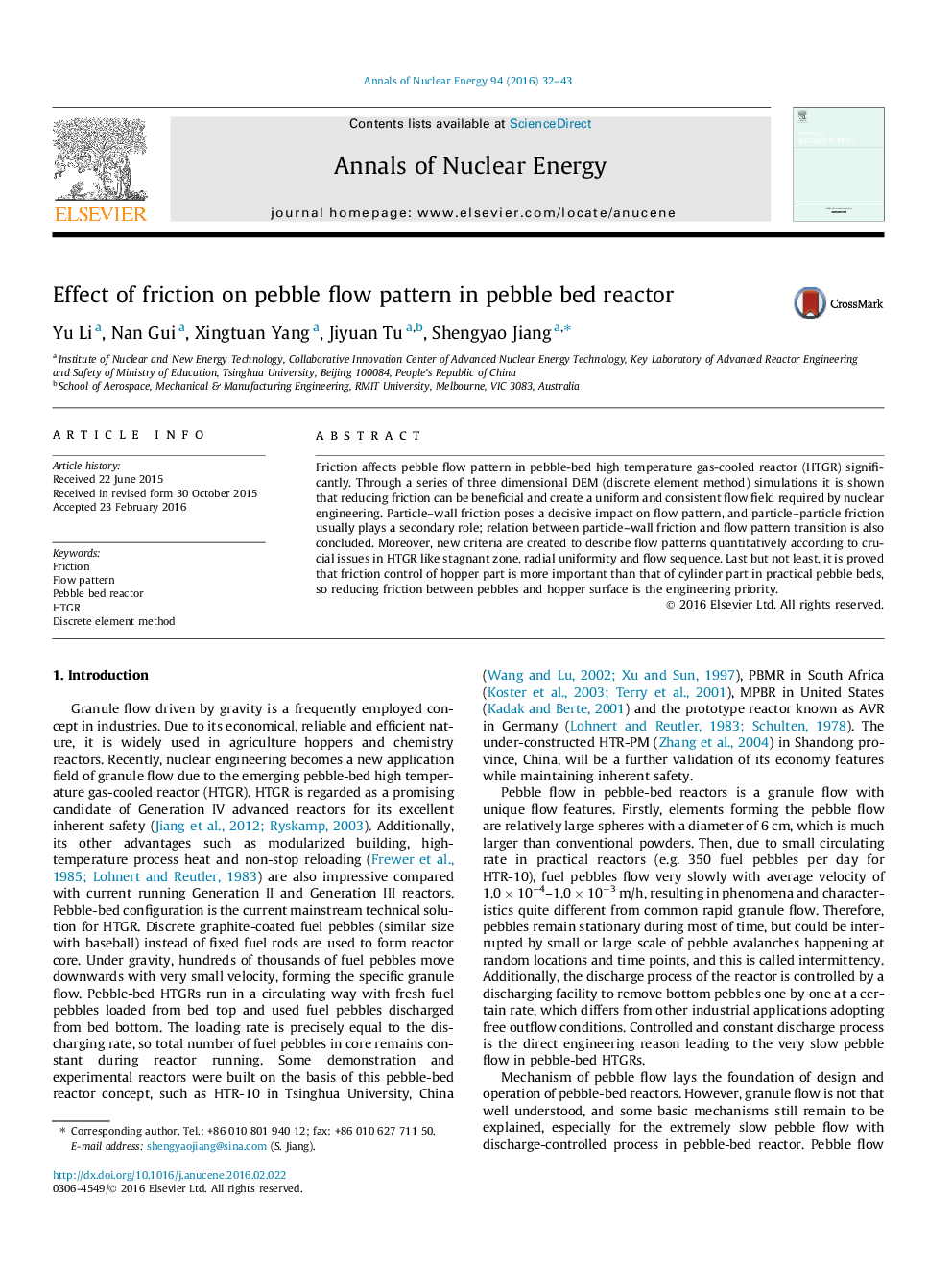| Article ID | Journal | Published Year | Pages | File Type |
|---|---|---|---|---|
| 8067607 | Annals of Nuclear Energy | 2016 | 12 Pages |
Abstract
Friction affects pebble flow pattern in pebble-bed high temperature gas-cooled reactor (HTGR) significantly. Through a series of three dimensional DEM (discrete element method) simulations it is shown that reducing friction can be beneficial and create a uniform and consistent flow field required by nuclear engineering. Particle-wall friction poses a decisive impact on flow pattern, and particle-particle friction usually plays a secondary role; relation between particle-wall friction and flow pattern transition is also concluded. Moreover, new criteria are created to describe flow patterns quantitatively according to crucial issues in HTGR like stagnant zone, radial uniformity and flow sequence. Last but not least, it is proved that friction control of hopper part is more important than that of cylinder part in practical pebble beds, so reducing friction between pebbles and hopper surface is the engineering priority.
Related Topics
Physical Sciences and Engineering
Energy
Energy Engineering and Power Technology
Authors
Yu Li, Nan Gui, Xingtuan Yang, Jiyuan Tu, Shengyao Jiang,
